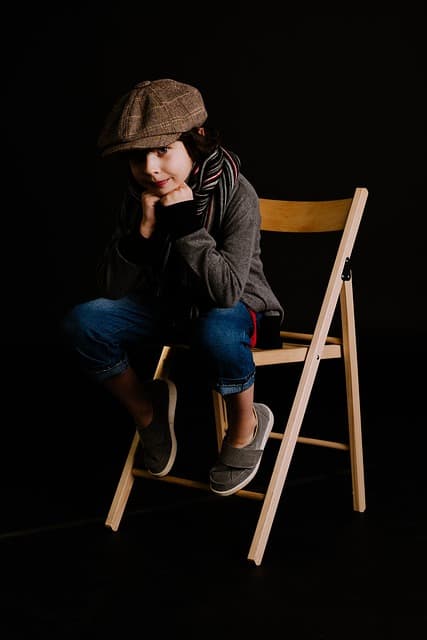
What is Hot Seating? In a nutshell hot seating involves asking a variety of questions to a character while performing their theatrical role. An audience asks the hot seated character questions which pertain to their role. The posed questions are to anchor an actor’s portrayal of their character when in the role.
Who Can Be Hot Seated?
Actors who are performing a certain role. School Students, Clinicians, teachers, health workers, social workers may use hot seating as part of their professional development and practice. Or anyone who finds this technique helpful in developing expertise and professional practices.
Often hot seating can allow the actor to deepen their knowledge of the motivations and objectives of their character.
Hot Seating the Actor
The questions involve the audience who are usually fellow cast or class members, who ask questions that are usually responded to in spontaneous and improvised ways.
The performer may be faced with answering questions which they themselves may not have thought of. It also allows the performer or actor to consider different points of view and angles to look at when thinking about aspects of their character.
The process can help the actor get to know their character better and understand on a deeper level their motivations and objectives. It also reinforces notions which help shape the character.
Typically the audience asks the person questions about their lives, relationships, jobs, likes and dislikes so that they can get a more in-depth look into their own characteristics.
A typical scenario might begin with simplistic questions moving into more sophisticated questions such as ‘How old are you? and then ‘What thing would you change about yourself?’ This is where actors are encouraged to think on a superficial level and then think more deeply about their character’s inner desires and feelings, which helps shape the character.
Hot Seating for Classroom Exercises
Begin by asking students what they think hot seating is and write down their responses so they can see their answers.
Explaining what ‘Hotseating’ is verbally and then ask for a volunteer student to sit in a seat at the front of the studio or classroom ready to answer questions. The teacher or tutor can give actors or performers their character such as famous figures. Some might include; Florence Nightingale, Nelson Mandella, Joan of Art, Harriet Tubman, Oprah Winfrey, Tom Cruise, Michael Jackson etc.
Or if they are younger students, you might want to ask them who they would like to meet. Typically they would choose a sporting, music, social media or acting figure. So with someone that everyone knows. You might want to have a bank of example people.
Or you might want to begin by giving actors easily recognisable characters where they will likely have a lot of pre-knowledge from which to draw from.
Questions to be asked could range from:
- What is your mother’s name?
- Where did you grow up?
- How many siblings do you have?
- What happens on a typical day of your life?
- What are you most proud of?
- What is your spouse’s name?
- Who do you admire in life?
- When did you find that you were famous?
- What special treatment if any do you receive?
- What achievement are you most proud of?
- What are you passions?
- What is your favourite thing to do when you are alone?
- What countries have you visited and why?
- Are you influenced by any other famous people?
These are a few questions you might like to ask students who need scaffolding to help them find meaning and depth to their characters. Many people find this type of exercise very helpful and even enjoyable. In Fact, it’s great to see the imagination of students who nail this exercise well.
Other Useful Hosting Ideas
Instead of having students/actors portray a famous or well-known figure, you could have them portray a loved one or close friend of the person. They could be the spouse, friend, sibling, or child of the person at hand. This can make students think outside the box even more because they would have to take into account the personalities of the person related to the main character they are wanting to know more about.
Out of the Box Hot Seating
Another great idea is for students to hot seat an inanimate object such as a toy, phone, book, or bag. Students can ask the object a range of questions using the who, when, why, what where question techniques. This is a good way to get actors into using their imagination and improvisation skills. It is also an imaginative way to begin a story.
Imagine you have a cell phone. The students ask the phone who they called last and why. They could ask them what their favourite photo or video was about and why. Questions such as where the phone had travelled and what was its last favourite conversation?
Hot Seating using Literacy
You could introduce Hotseating using characters from a book which the class is reading. Have students ask a range of questions, which pertain to the plot of the book and the happenings of the character. The hot seated person would answer as a character and students would ask questions about their lives.
This particular game could also be used where students choose a favorite character from the book and the other students try to guess what character they are portraying by asking a range of questions. This type of hot seating will be a little shorter, but fun.
An in-depth character analysis could stem from this activity, a narrative could be written, or a description of the scene and or character could be developed.
There are literally endless activities that could stem from a good hot seating exercise.
The benefits of Hot Seating
- Increases the imagination
- Cements the character in the psyche
- Increases spontaneous thinking and delivery
- Increases confidence levels
- Builds awareness of their own abilities to convince others of their character
- Builts a more rounded character from which to draw from
- Anchors the actor into their character and or scene.
- Gives participants and share the visual and aural idea of the character
- Gives the actor opportunities and purpose to practice answering questions
Hot Seating is a very valuable tool for both the actor, a student at hand who are trying to get to grips with the inner and outer actions of their character. It can cement ideas, character elements, and enable actors to fully explore the intricacies of the character’s motivations and objectives for the play.

